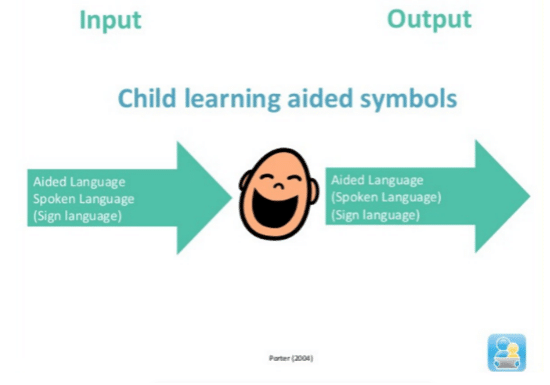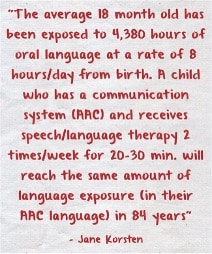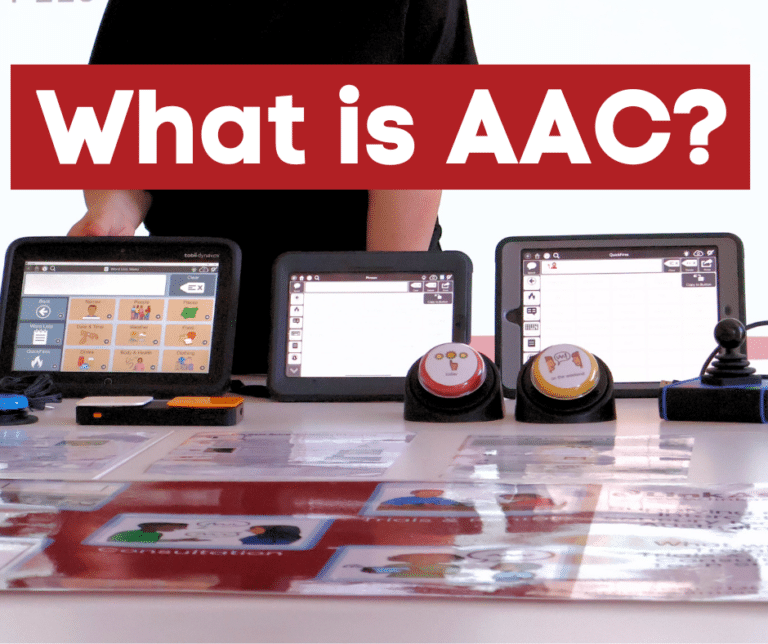
AAC Implementation Challenges
Tips to Overcome Common AAC Implementation Challenges
AAC implementation is a journey that has challenges and barriers along the way.
As Speech Pathologists, we want to ensure we support communication partners (people who regularly communicate with the AAC user) to be equipped to meet these challenges. As families and other familiar communication partners, we want to feel supported and educated to confidently problem solve these day-to-day hurdles. Ultimately, we want to give AAC users every opportunity to communicate meaningfully and avoid AAC abandonment.
Let’s highlight some of the most common challenges when implementing AAC and provide tips and strategies to overcome these barriers.
Common Challenges & Tips
1. Lack of Training for Communication Partners
Challenge
AAC users spend majority of their time with family, teachers and support staff – not their speech pathologist. So, if these everyday communication partners don’t have the knowledge or confidence in using the AAC system, it will not get used.
Tip
It is important for speech pathologists to spend time training and supporting the user’s familiar communication partners. Consider arranging group trainings with school staff or support workers, to ensure everyone supporting the user receives the same training. Try implementing regular 1:1 consults with family members or other regular communication partners to allow them the time to ask questions and support ongoing learning, implementation and troubleshooting. Ongoing education will also support communication partners to understand the value of AAC, which will increase their motivation to learn and use the system. Training and support for communication partners should not stop after the AAC system arrives!
2. Inconsistent Access and Use
Challenge
If AAC is only available, modelled and used in therapy sessions, the user will not gain adequate exposure or opportunity to develop their communication skills to meet their full potential.
Tip
It is important to encourage communication partners to develop consistent availability and modelling of the AAC system. Speak with families and support staff to understand and meet them where they are in their AAC journey – create achievable goals together and continue to review and develop new goals. Embed AAC as part of their everyday life – find routines that AAC can easily be added to. Form habits of charging the device overnight, packing the AAC system for all outings, taking the AAC system out of the person’s bag, having it available in all environments. Remember – see me, see my AAC!
3. Unrealistic Expectations
Challenge
AAC implementation is an ongoing journey and progress can feel slow. This can be disheartening, especially for families, and can lead to beliefs that AAC is not working or success is not possible for the user. As speech pathologists and communication partners trying to set our users up for success, because we want to support them to overcome any barriers, it can be natural for us to focus on the challenges.
Tip
This is where realistic goal setting and expectations are important. We also need to acknowledge that progress needs time, consistency and effort. But success can also look different from meeting structured goals – and if we aren’t actively looking for it, we can miss these wins! Try switch your focus and your perspective of progress. Notice and celebrate every little win, bit of progress and step forward – even if they feel small. “If we look for ways in which AAC is working, we will find them.” (https://speechwithmslexi.com/aac-isnt-working/)
4. Limited or Irrelevant Vocabulary
Challenge
If the vocabulary the user has access to isn’t meaningful, motivating or relevant, they are much less likely to use their AAC system to communicate. How can they talk about their favourite TV show, ask about their family/friends or answer questions in class if they don’t have access to the right words?
Tip
Personalising the user’s vocabulary is one of the first things that should occur during an AAC prescription. For low-tech AAC systems, it is important this process is completed before the system is ordered/created. For electronic AAC, this can be added when the device arrives or even pre-programmed in preparation. Ensure to seek input from family, support staff, school staff and friends, and most importantly the user themselves, as to what vocabulary needs to be included in their system. You can use resources such as the AAC-Personalised-Vocabulary-Template.docx to help gather this information. People’s vocabularies grow and change with them and their life, so ensure you continue to regularly update their system and add new words!
5. Tech Issues / Wear & Tear
Challenge
With electronic AAC system, technical issues can occur. Paper-based systems can also get damaged or go missing…
Tip
For electronic systems, ensure to regularly back-up your communication software!
- TD Snap: Deciding to Sync, Share, or Save in TD Snap.pdf
- Communicator 5: Where can I find the Import/Export Feature to back up in Communicator – Tobii Dynavox Global
- If you have a Tobii Dyanvox device, you can contact Link Assistive’s technical support for help via emailing support@linkassistive.com or Booking a Support Session Online. You can also call us on (08) 7120 6002 and ask to speak with a tech team member. For other brand devices, contact the relevant suppliers, such as: Zyteq, Liberator, Control Bionics, etc.
- It is also important to ensure the user has a low-tech AAC option or back-up copy. This is useful for use in wet or messy environments, as well as a back-up for when technology goes flat or fails or a paper-based system is damaged or lost. You can learn more about low-tech AAC options here: Low-tech AAC options for TD Snap – Link Assistive
Conclusion
- In summary:
- Speech pathologists, families and familiar communication partners should work closely together – you are a team with a common goal! Continue to share your knowledge and listen to each other’s feedback.
- Make AAC part of the user’s everyday life and routines. Encourage all communication partners to ensure AAC is available and used.
- Be patient, realistic and focus on the little wins!
- Ensure the system and vocabulary is personalised for the user and their needs.
- Life happens and tech fails – be prepared!






